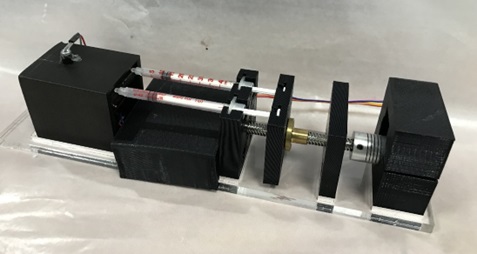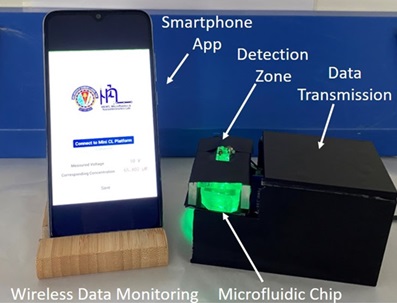Abhishesh Pal, Sohan Dudala, Satish Kumar Dubey and Sanket Goel are a team at MEMS, Microfluidics & Nanoelectronics (MMNE) lab who are is working towards realizing futuristic smart sensors and intelligent energy harvesters encompassing various multidisciplinary domains. While MMNE Lab strives to develop state-of-the-art technologies in sensing, the focus is to keep societal applications, user-frindly and affordable at the centre of the entire process value chain. An array of pollutants are responsible for water quality deterioration; nitrayes and nitrites being the highest pollutants. Being highly soluble in water, they have the amenability to reach potable water sources. These constituents, beyond prescribed limits, have adverse effects on human health, including ailments such as methemoglobinemia (blue-baby syndrome) which might be fatal to infants. Chronic exposure to these nitrites and nitrates has also been linked to certain cancers.
The effective management of the excesses starts with proper, rapid and affordable identification, i.e. sensing. To facilitate the same, MMNE lab has developed a standalone, point-of-source, portable, low-cost, automated, and integrated system for rapid detection and quantification of nitrites (Figure 1). The system was developed based on the application of Beer–Lambert law where a microfluidic device was fabricated to carry out a colourimetric reaction to quantify nitrites in the water. An android smartphone application was developed to control the complete system and store the data. The sensing platform relied on cost-effective fabrication techniques such as 3D printing and clean room-free device development. The platform offered a detection limit 10 times lower than that specified by World Health Organization, making it effective in sensitive quantification in portable settings. The component cost of the developed system stood at ₹2,200 (US$ 33).

While attempting to solve the issue pertaining to excess nitrates and nitrites in water, an important realization is that these extra constituents can affect soil health as well. While these nitrites and nitrates in excess are detrimental, their deficiency may hamper plant growth. Except nitrites, approximately 12 chemical constituents which are required to be in optimal ranges for proper plant growth.

A colourimetric device was developed for the determination of soil macronutrients i.e. nitrite, phosphate, and potassium (NPK) (Figure 2). Here, the color changes as the analyte reacts chemically and forms a chromophore. The intensity of color change is the result of the concentration of the analyte.
This change in color is quantified by employing optoelectronic components such as light emitting diodes (LEDs), photodiodes and a transimpedance amplifier circuit. The device was Internet of Things (IoT) enabled to facilitate data monitoring from anywhere on the globe. The device could determine nitrite in a concentration range of 1-30 µM and a limit of detection of 0.33 µM. Similarly, the phosphate can be determined in a range of 10-100 µM with a limit of detection being 0.75 µM. The work to integrate potassium detection capabilities is underway.
While the colourimetric device performed well for NPK detection, we wished to develop a platform for all required constituents for soil health assessment. To achieve a comprehensive soil health assessment system, MMNE Lab is working towards an automated system for soil health assessment (Figure 3). The device is based on an ion-selective electrode, wherein voltammetric responses from the modified screen-printed carbon paste electrode are calibrated against the concentration of the ion of interest. The electrode can be modified using ion selective membrane to ensure high specificity towards the ion of interest. Integration of detection of other soil constituents are currently in the pipeline.
The environmental sensors including that for soil and water are part of one vertical in which MMNE lab engages. MMNE Lab also works on a wide range of chemical and biochemical sensors for bio/chemical analytes using multiple sensing approaches such as electrochemistry, chemiluminescence and electrochemiluminescence. These sensing mechanisms have been employed for a multitude of analytes including mercury, copper, lead, dopamine, uric acid, glucose, lactate, etc. In all approaches undertaken for sensor development, the key is to develop affordable, simple and sustainable solutions for societal applications!
You Might Also Like
- BITS to Baker Hughes: Shad Hussain’s Journey Through Turbulent Times
- Be Cool: Navigating Life, Literature, and Mental Health with Shashi Warrier
- Coaching Across Cultures: Brajesh Bajpai’s Journey of Learning, Leading, and Adapting
- From Engineer to AI Leader: An Interview with Akhil Singhal on Startups, Strategy, and the Future of Gen A
- From Circuits to Capital Markets: Deepak Joshi’s Global Finance Journey














